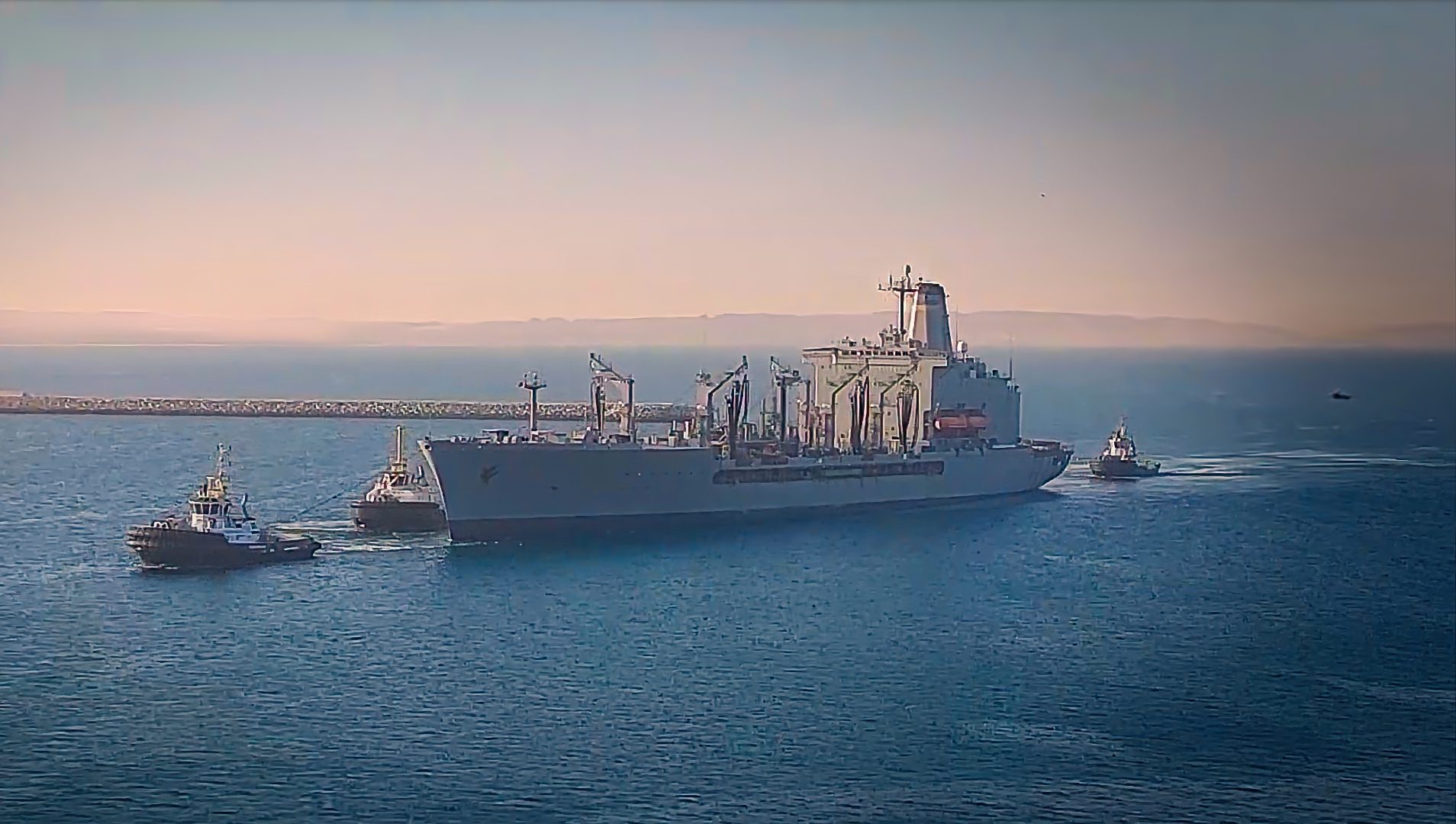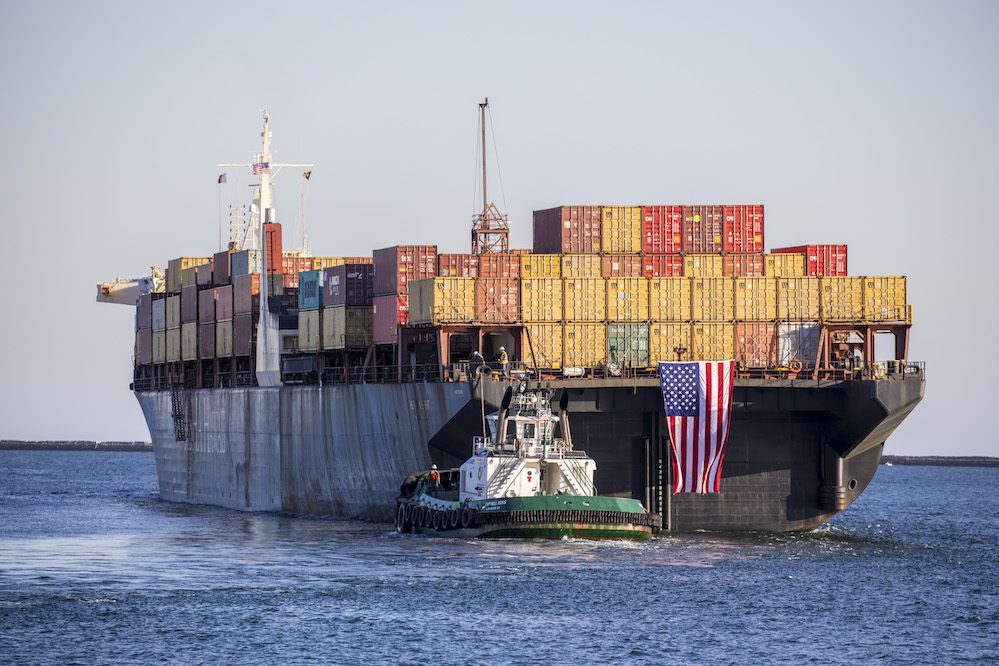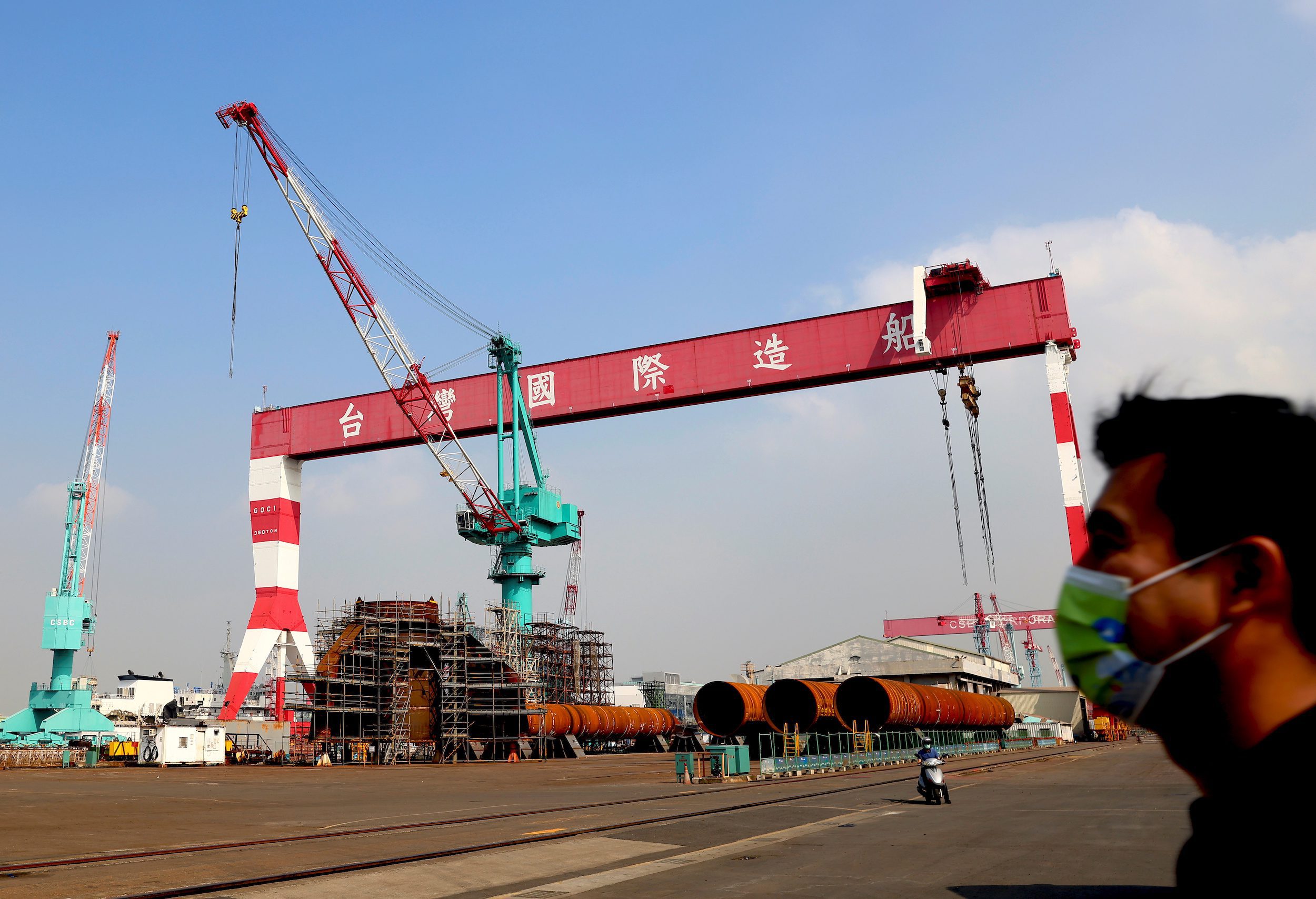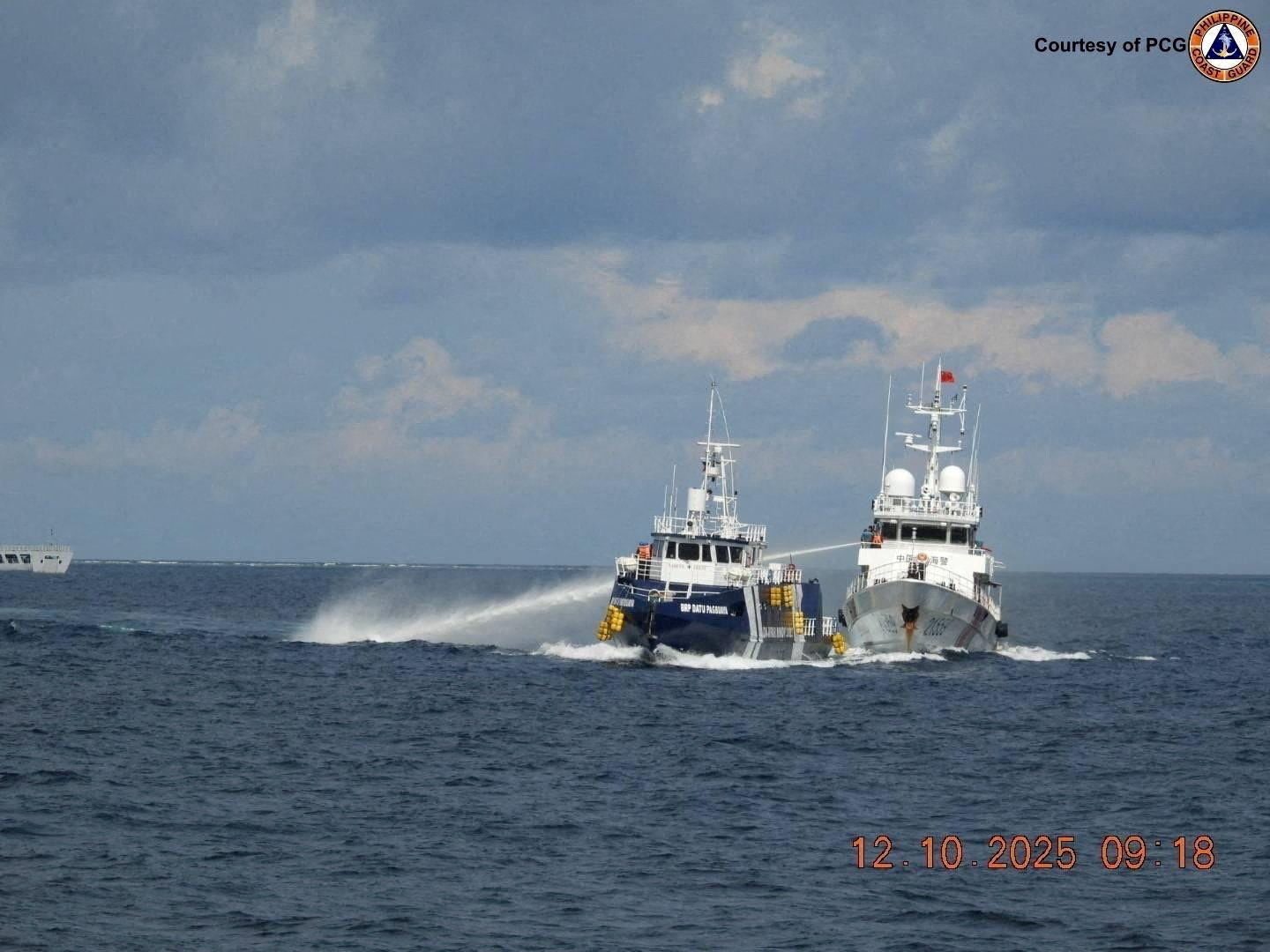Salvatore R. Mercogliano, Ph.D. –
The Navy oiler – a tanker designed to refuel other ships while at sea – shuddered from the hit. Almost immediately, water began to flood into the engine room and at least one of the ship’s rudders was out of service. The damage and flow of water proved challenging for the crew. As the only US Navy fuel ship in the area capable of supporting a carrier strike group came to a stop, the vulnerability of the thin lifeline of American afloat logistics became apparent. How would an entire carrier strike group remain operational without fuel for its planes and escorts? With one stroke, the hitting power of a substantial portion of the U.S. Navy was reduced.
Four score and two years earlier, in January 1942, the United States Pacific Fleet went on the offensive following the attack on Pearl Harbor the month before. The new commander of the fleet, Admiral Chester W. Nimitz, dispatched his three carriers – USS Enterprise, Yorktown, and Lexington – on a series of strikes to disrupt the Japanese offensive. Enterprise and Yorktown, after escorting US Marines to Samoa, struck the Gilbert and Marshall Islands. Lexington aimed for the recently captured American base at Wake Island.
The former attack went off without issues. Enterprise and Yorktown achieved surprise and disrupted Japanese logistics in the region, supported by the new fast oilers USS Platte and Sabine. Lexington‘s strike failed to achieve its aims because of a decisive and devastating strike by the Japanese that forced an entire carrier strike group to abort its mission. Early in the morning of January 23, 1942, the Japanese submarine I-72 spotted a lone American ship on the horizon. Making its approach under low clouds at night, the sub fired a single torpedo that struck the ship on the starboard side at 0310, but it proved a dud. Continuing its approach, it fired again, scoring a successful hit nine minutes later. The ship came to a halt as the engine room flooded.
I-72 circled its victim and at 0328 fired a third torpedo that detonated against the port side forward. With flooding fore and aft on both sides, the ship was finished. The commanding officer, Commander William Bartlett Fletcher, Jr., ordered the crew to abandon ship 120 miles west of Pearl Harbor. The ship sank an hour later taking 57 men with it, leaving 126 to be rescued. The ship was a lowly auxiliary vessel of the U.S. Navy, USS Neches. While not a glamorous command, Neches, the Navy’s fifth oiler, contained the fuel necessary for USS Lexington, its aircraft, and supporting task force to reach Wake Island and return. Its loss meant Vice Admiral Wilson Brown could not execute Nimitz’s order.
In much the same way Neches was lost to Lexington, on September 23, 2024, USNS Big Horn (T-AO 198) was returning from an underway replenishment operation with the USS Abraham Lincoln carrier strike group. Big Horn had been performing double duty in the Arabian Sea supporting not just Lincoln, but the USS Theodore Roosevelt‘s strike group. The Kaiser-class oiler, crewed by civilian merchant mariners of the Military Sealift Command (MSC), had become the standard method of refueling US Navy ships at sea. With the Houthis attacking shipping in the Red Sea/Bab el-Mandeb region and the Iranians making threats against Israel due to their incursion into Gaza, the US carriers were sailing on deterrence patrols.
Roosevelt‘s group departed the area in September, leaving Big Horn to provide fuel for Lincoln. The high pace of supporting two carrier strike groups and then shuttling to port to reload placed a heavy premium on the hard-stretched Military Sealift Command crew. The commander of the organization, Rear Admiral (lower half) Philip Sobek, just announced a plan to shift the crews of 17 support vessels to prioritize the replacement of personnel on forward deployed ships like Big Horn. A series of accidents, including the grounding of USNS Alan Shepard & Herschel “Woody” Williams, along with crewing issues, raised readiness concerns for the logistic fleet of the US Navy operated by Military Sealift Command, with twenty percent of the battle force crewed by merchant mariners.
As Big Horn returned to the port of Duqm, Oman, the ship passed over Shib Kudun (San Carlos) Bank and grounded. Based on videos released, the ship suffered flooding of the engine room and damage to at least one of its rudders necessitating the ship being towed into port. The damage to Big Horn left Lincoln and its strike group with insufficient at-sea fueling capability. There were two dry stores/ammunition ships in the area – USNS Amelia Earhart and Alan Shepard– but they each only carried a seventh of Big Horn‘s fuel and transferred it at a much slower rate.
The mission loss of Big Horn meant that the US 5th Fleet had to modify its operations, specifically the ability to sustain Lincoln and its escorts in the region. This necessitated the dispatch of most of Lincoln’s escorts into the Red Sea to be closer to fueling sources in Saudi Arabia. On September 27, the destroyers Spruance and Stockdale, along with the Littoral Combat Ship Indianapolis, sailed through the Bab el-Mandeb and came under attack from Houthis. They failed to hit the ship, but they remained in the Red Sea until November 11. Lincoln and its diminished escorts maintained their presence in the Arabian Sea, supported by the two hard-working AKEs and two eventual reinforcements.
The first was a commercial tanker chartered by Military Sealift Command. The ship was modified to receive underway replenishment rigs from vessels and was intended to serve as consolidation platforms for oilers. The concept was that commercial tankers go into port, load, and then meet the underway replenishment oiler at sea, allowing them to maintain their forward presence. The Navy had ended this practice following the peace dividend with the conclusion of the Cold War. With the rise of potential threats at sea, MSC rekindled this concept. But this marks the first time an aircraft carrier has conducted such an operation with a commercial tanker in decades.
Second, the 7th Fleet dispatched Big Horn‘s sistership USNS Rappahannock, one of four oilers deployed to the western Pacific, to the 5th Fleet to take over and support Lincoln. This deprived the western Pacific of one of its crucial logistical elements and it took weeks before Rappahannock arrived on station to relieve Big Horn. She did not transit the Straits of Malacca until mid-October. The deployment was brief as the group departed in November.
The loss of Neches in 1942 and damage to Big Horn in 2024 highlights the vulnerability of American forward naval presence in the world. For decades, the United States survived due to the uncontested nature of logistics on the world’s oceans. As such, the Navy undertook the process, starting in 1972, to transfer the at-sea logistics and auxiliary forces from Navy-manning to that of the Military Sealift Command. As of 2010, all auxiliary ships in the US Navy have merchant mariner crews on board. Additionally, to save money, the concept of station (forward deployed logistic ships) and shuttle commercial vessels has given way to single ships providing dual services from forward logistic bases. The shift to civilian crewing has also reduced the crews on board and removed nearly all defenses for the ships, making them vulnerable to attack.
Following the loss of Neches, Admiral Nimitz required all oilers and replenishment vessels to be escorted, although that would prove insufficient when USS Neosho and its escort – USS Sims – were discovered and sunk during the Battle of Coral Sea. The logistic operations for Coral Sea, and subsequently for the invasion of Guadalcanal, proved essential for victory, but with issues. The reason that Vice Admiral Frank ‘Jack’ Fletcher withdrew from covering the island was largely due to a botched logistic plan that left his ships low on fuel. The reason he fought the Battle of Eastern Solomons with two versus three carriers was the need to send USS Wasp south to meet up with replenishment ships that could not be risked. At Leyte Gulf, Admiral William F. Halsey fought the battle with three of Task Force 38’s groups versus four as he sent one to Ulithi for replenishment, upkeep, and maintenance.
As a new national security team prepares to take the helm in the second Trump Administration, the logistic shortfalls of the Department of Defense should be high on their list of issues. Not only does the US Navy lack depth in its at-sea refueling capability, but there are other concerns. The sealift ships needed to deploy U.S. forces abroad average 44 years old and are below the required readiness level. The U.S. Army and Marine Corps have substantially degraded their afloat prepositioning capability. The Army watercraft fleet demonstrated its vulnerabilities in the recent operation off Gaza, and the U.S. merchant marine is woefully unprepared to face a situation akin to that faced by Admiral Nimitz and the United States in the Pacific in 1942.
The underpinning of American naval success since the deployment of the first destroyers across the Atlantic in 1917 to Europe has been the ability of the US Navy to provide the logistics needed to sail and maintain their forces forward deployed. Today, potential adversaries of the US are making note of these issues with massive studies being done by the Chinese on past, present, and future American logistical operations. These vulnerabilities need to be addressed by getting to the root of the issue with rebuilding the American maritime industry and sector so that we can build, maintain ships, recruit, and retain mariners to sail them during peace and war. Without these, the United States is a sea power with a finite window of operations in much the same way that the Japanese went to war over eight decades ago and was defeated by a nation that embraced the true Alfred T. Mahan theory of sea power.
To paraphrase a famous proverb, For Want of an Oiler the Battle May be Lost. That was proven when Neches went down in 1942, and Lexington abandoned its raid on Wake Island. It was affirmed again when Big Horn was damaged in 2024 and Lincoln found itself without sufficient fuel to maintain its strike group.

 Join The Club
Join The Club











